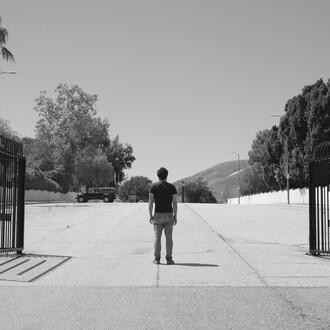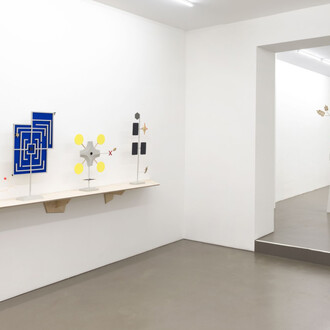On Thursday, the 19th of June, Galerie Russi Klenner is pleased to present Rosen aus dem süden: ausgewählte werke aus berliner artotheken, a group exhibition curated by gallery artist Paul Hutchinson.
This curatorial project celebrates the Artothek as an institution of public access and cultural education, considering its role in contemporary society and exploring its relationship to public and private spheres.
An Artothek operates on the same principle as a library: any citizen can borrow original artworks for their private homes through a low-cost rental system. A loan can last several months. These public institutions act as a host for a multitude of discourses, reflecting various artistic backgrounds and historical contexts, while showcasing a variety of media, genres, and levels of professional recognition. Their collections encompass oil paintings, watercolors, gouaches, sculptures, collages, drawings, prints, and photographs. High-profile artists are represented alongside emerging or much lesser-known positions. Beyond lending, an Artothek can function as a center for cultural education and dialogue, fostering outreach activities to maintain or establish public engagement with the visual arts. Many Artotheken acquire new works each year.
The exhibition’s title references a photograph by renowned Berlin illustrator Heinrich Zille, whose drawings both satirically and critically represent the struggles of everyday life in the city’s workingclass neighborhoods. Zille’s documentation of Berlin’s social fabric resonates with the exhibition’s democratic ethos, connecting questions of class and access with historical and contemporary depictions of the city and its diverse inhabitants.
Drawing from three of Berlin’s largest Artotheken – Artothek Charlottenburg Wilmersdorf, Artothek Zentral- und Landesbibliothek Berlin, and Graphothek Berlin – the exhibition presents works by artists based in Berlin or with a working relationship to the city. A minor excerpt from a combined collection of 12.000 works, the exhibition pays homage to the cultural richness of the local art scene, emphasising the importance of inclusive, low-threshold institutions and the socially conscious policies that support them.
The relationship to Berlin, and specifically to Kreuzberg – where the gallery is located – is particularly significant to the concept of the display and is referenced in multiple works. Kreuzberg’s history as a diverse, working-class district aligns in spirit with the ‘access for all’ value system represented by the Artotheken. Furthermore, we encounter hints to Hutchinson’s own practice in his curatorial approach. References to questions of class and identity pervade both the exhibition‘s conceptual idea as well as select individual pieces.
By presenting publicly accessible works within a private gallery space, the exhibition creates a dialogue between public and private spheres, transforming the gallery into a theatre in which these two different raison d’êtres interact. This conscious positioning offers a possibility to re-contextualise the concept of the Artotheken, shedding a light on their long-standing commitment to art practice, while reminding a gallery audience of the service these institutions provide every day.
In times of major cuts to cultural budgets, the exhibition celebrates the Artotheken as one of many civic cornerstones that still maintain their place in the social infrastructure of the city. Bringing together a small selection of outstanding works, a mosaic of our common home is being presented here – an expression of faith in the continuous relevance of public institutions for community-building, free education, and unhindered access to culture.
(Text by Emanuela Anders)














